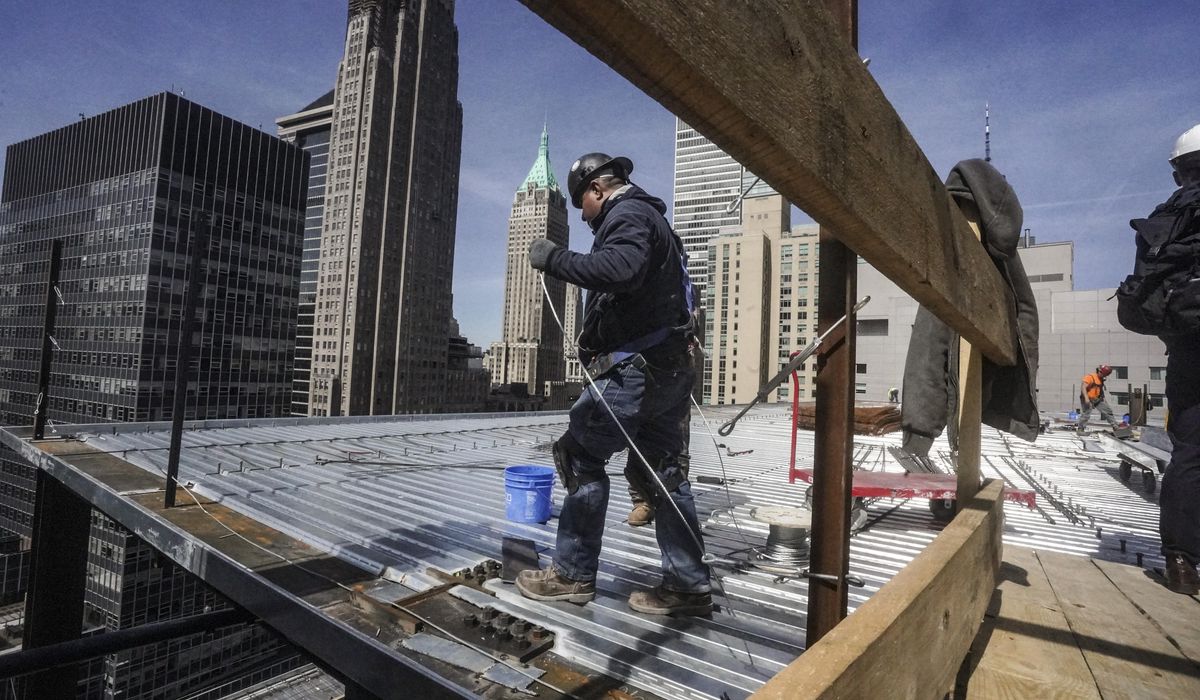


Federal lawmakers must reduce a massive funding advantage that four-year colleges enjoy over workforce education to meet a growing shortage of blue-collar workers, a construction industry report says.
The Associated General Contractors of America, Progressive Policy Institute and construction service company Procure released the report Thursday. It found that 80% of federal higher education dollars go to traditional degree programs that only 38% of Americans complete, while just one-fifth addresses worsening labor needs in construction and other skilled trades.
Of the $139.5 billion the government spends on higher education each year, the report found that $113.5 billion funds Pell grants and student loans for academic degrees. That leaves $28.2 billion for collegiate vocational training, apprenticeships, GI Bill benefits and other workforce programs.
“If the U.S. does not act now to ensure the nation’s workforce is prepared for open job opportunities, more Americans will be unqualified for work, and employers will continue to struggle to find talent and remain competitive,” the report states. “Yet policymakers continue to undervalue the importance of workforce development and instead prioritize investments in degree programs that often aren’t needed to get a good job.”
Despite low unemployment rates, the report counted only 68 people for every 100 job openings nationwide due to “a growing skills gap.”
According to the latest data from the Bureau of Labor Statistics, the construction industry has 407,000 job openings, with a projected need for 723,000 workers annually as demand grows and workers retire. The report said 88% of construction firms have struggled to hire workers.
The report comes as the number of students earning trade certifications and two-year degrees has surged in recent years while the number of four-year bachelor’s degrees has declined.
The tally of adults graduating with college degrees fell for the second straight year in 2022-23 after inching upward annually for seven years, the National Student Clearinghouse Research Center reported in April.
But the center said “more students earned a certificate … than in any of the last 10 years,” with a surge among 18-to-20-year-olds making up over half of a 6.2% increase of 26,900 first-time graduates.
According to a Georgetown University report last month, colleges in 283 out of 565 local labor markets need to convert “at least half” of their middle-skill degree programs from baccalaureate preparation to vocational training to satisfy anticipated labor needs in those fields.
Of the 18.5 million annual job openings expected nationwide through 2031, 5.8 million won’t require four-year degrees, the report noted.
In Thursday’s report, the construction industry called on lawmakers to double federal investments in Perkins grants and other career and technical programs.
The report also called for increased funding in “faster and more flexible training programs” such as Virginia’s FastForward program. Launched in 2016, FastForward provides online training at community colleges for HVAC technicians, medical workers, information technology specialists and other in-demand jobs.
The Washington Times has reached out to the White House and Education Department for comment on the recommendations.
In April, the Biden administration designated cities in New York, Michigan, Wisconsin and Pennsylvania as federally funded workforce hubs to train workers for new manufacturing and construction jobs.
“The Biden-Harris administration is committed to ensuring that all workers — including women, people of color, veterans and those who have been historically left behind — have equitable access to those job opportunities and the training and skills needed to fill them,” the White House said in a statement at the time.
• Sean Salai can be reached at ssalai@washingtontimes.com.
